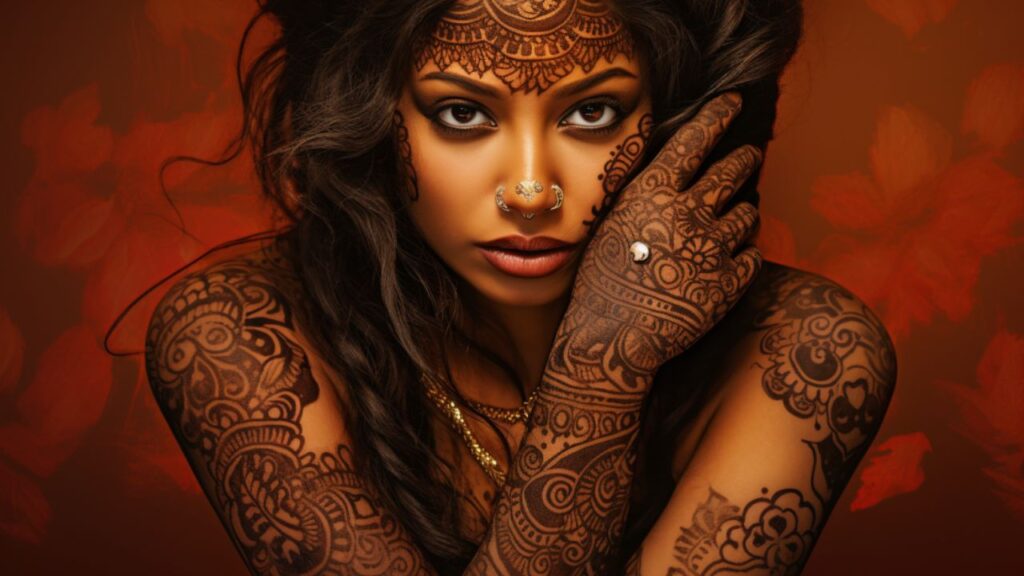
Hello, my passionate pursuers of love knowledge! Professor Heartstring here, your navigator in this exciting journey of unveiling the fascinating tapestry of love and marriage traditions from around the world. These practices are rich in symbolism, history, and culture, painting a vivid picture of how diverse societies cherish and honor the sacred bond of marriage.
Before we embark, if you haven’t already, do test your current knowledge with the “Love in Different Cultures: Global Traditions Quiz.” It’ll be an enriching warm-up for our exploration today!
1. Jumping the Broom (United States): Rooted in African-American culture, newlyweds jump over a broom to symbolize the sweeping away of the past and the beginning of a new domestic journey together.
2. Kransekake (Norway): This involves a towering cone-shaped cake made of almond ring pastries. The number of rings that remain attached when the topmost layer is lifted is believed to predict the couple’s number of future children.
3. Maasai Spitting (Kenya): The father of the bride blesses her by spitting on her head and breasts. In the Maasai culture, spitting is a symbol of good luck and fortune.
4. Blackening of the Bride (Scotland): Friends “blacken” the bride and groom with substances like molasses and flour, then parade them around town. It’s thought that if they can withstand this, they can handle anything in marriage.
5. Mehendi Ceremony (India): The bride’s hands and feet are beautifully adorned with intricate henna designs. The darkness of the henna is said to represent the strength of the couple’s love.

6. Kissing Tradition (Sweden): When either the bride or groom leaves the room, guests can steal a kiss from the one left behind. This quirky tradition keeps the wedding atmosphere light and playful.
7. Vineyard Wedding (Moldova): The couple gets married in a vineyard, where they crush grapes with their feet. The first wine of that harvest is then saved to be drunk when their first child is born.
8. Smashing Plates (Germany): The night before the wedding, guests smash porcelain plates to ward off evil spirits. The couple cleans up the mess together, signifying their shared responsibility in marriage.
9. Bridesmaids in White (Italy): Unlike Western tradition, Italian bridesmaids also wear white to confuse any evil spirits that might want to harm the bride.
10. Two-Day Wedding (Mongolia): Mongolian weddings typically last for two days, with a smaller ceremony on the first day and a larger feast on the second day with friends and extended family.
11. Unity Bowl (Australia): Australian aboriginal weddings often involve a unity bowl. The couple dips their hands in the bowl, and their intermingled fingerprints symbolize their united life.
12. Fisherman’s Knot (China): The couple ties a fisherman’s knot using a red string. This knot is one of the strongest; as more pressure is applied, the knot becomes tighter, symbolizing the couple’s bond.

13. Handfasting (Celtic): The couple’s hands are tied together with a cloth or ribbon, symbolizing their connection and devotion to each other.
14. Chuppah (Jewish): The couple stands under a chuppah, a canopy, signifying the home they will build together.
15. Three Wedding Outfits (Nigeria): The bride wears three different outfits throughout the wedding to showcase her beauty in different ways.
16. Tea Ceremony (China): The couple serves tea to their parents and elders, a sign of respect and gratitude.
17. White Dove Release (Philippines): A pair of white doves, representing the bride and groom, are released to symbolize a peaceful and harmonious marriage.
18. Pecking Order (Korea): After the wedding ceremony, the groom’s friends remove his socks, tie a rope around his ankles, and start to beat his feet with dried fish. It’s a test of strength and character, believed to prepare the groom for his first night of marriage.
19. Carrying Over the Threshold (Russia): In an old Russian tradition, the groom carries his bride over the threshold of their new home to protect her from evil spirits lurking below.

20. Tidung Island’s Unique Test (Indonesia): In the Tidung community of Indonesia, newlyweds are not allowed to use the bathroom for three days and nights after the wedding to avoid bad luck.
21. Money Dance (Greece): During the Greek money dance, guests pin money on the bride’s wedding dress to give the couple a prosperous start.
22. Breaking the Glass (Jewish): The groom steps on a glass to shatter it, reminding everyone that even in happy times, one must remember the destruction of the Holy Temple in Jerusalem.
23. The La Soupe (France): A traditional French wedding includes a prank where the bridal party collects leftover food and drink from the reception, mixes it in a toilet bowl, and serves it to the couple!
24. Duck Carrying (Korea): In a Korean wedding tradition, the groom presents his mother-in-law with wild geese or ducks, which represent fidelity because they mate for life.
25. Henna Tattoos (Middle Eastern and North African cultures): Like India, these cultures use henna to adorn the bride’s hands and feet with stunning patterns for luck and beauty.
26. Log Cutting (Germany): The couple saws a log in half in front of their guests to show that they can work together and overcome obstacles.
27. Dolls on Wedding Cake (Puerto Rico): A doll dressed similarly to the bride is placed on the wedding cake. It’s surrounded by tiny charms attached to ribbons for the single ladies to pull out, predicting who will marry next.

28. Bridal Ransom (Russia): The groom must go to the bride’s family’s home on the wedding day and pay a ransom for his bride, usually through money, gifts, or romantic gestures.
29. Sake-Sharing Ceremony (Japan): The bride and groom share sake, a Japanese rice wine, symbolizing the joining of the two families.
30. Spicy Wedding Food (India): Indian wedding cuisine is usually spiced to the hilt to signify the importance of including all flavors of life in a marriage: sweet, sour, bitter, and spicy.
31. Bride’s Cry (China): In a tradition known as Zuo Tang, or “sitting in the hall,” Chinese brides spend an hour a day for a month before the wedding crying to express their profound sorrow at leaving their family.
32. Serenading the Bride (Mexico): The groom serenades his bride with a romantic song the night before their wedding.
33. First Kiss Privacy (Inuit): Inuit tradition stipulates that the couple’s first kiss should take place in private. The couple disappears into the bride’s family house, reappearing after the private kiss.

34. Wedding Fasting (Romania): In some Romanian villages, the bride and groom fast the day before the wedding to ward off evil spirits.
35. Bell Ringing (Irish): The Irish include bells in their wedding ceremony as a reminder of the commitment they made and to ward off evil spirits.
36. Wedding Lasso (Mexico): A lasso, often a rosary, is placed around the couple during the ceremony to symbolize their unity.
37. Hand Carving (Mali): The bride and groom are expected to carve symbols into wood that represents their hopes for their union.
38. Arrival on Horseback (Pakistan): The groom typically arrives at the wedding venue on a horse, signifying his journey to claim his bride.

39. Swapping Roles (Iroquois): During the wedding ceremony, the bride and groom dress in clothes of the opposite gender to confuse any evil spirits.
40. Spitting on the Bride (Maasai, Kenya): As strange as it sounds, the Maasai tradition includes the father of the bride spitting on her head and chest as a form of blessing.
41. Kissing Every Hour (Sweden): Every hour on the hour, the bride and groom must find each other and kiss, no matter where they are.
42. Shooting Arrows (Yugur, China): In this unique tradition, the groom shoots three arrows (sans heads) at the bride, then breaks the arrows and bow to ensure everlasting love.
43. Money Dance (Poland): Guests pay to dance with the bride and groom. The money collected is used for their honeymoon or to set up their home.
44. Bridal Sedan Chairs (China): The bride is carried to the groom’s house in a brightly colored, beautifully decorated sedan chair.

45. Applying Turmeric (Bangladesh): Turmeric paste is applied to the bride’s skin for a glow on the wedding day. The ritual, known as Gaaye Holud, also includes a fun song and dance routine.
46. Baumstamm Sägen (Germany): After the ceremony, the couple saws a log in half in front of all their guests, symbolizing their teamwork and future success in overcoming obstacles together.
47. Ring of Flowers (Hawaii): The bride and groom exchange leis (garlands of flowers), symbolizing their love and respect for each other.
48. Kola Nuts (Nigeria): The couple shares kola nuts with their parents and guests. The kola nut, which stays potent for a long time, represents the couple’s lasting love.
49. Sand Mixing (Australia): The couple mixes two different colors of sand, symbolizing their joined lives. Often, children from previous marriages also join in this ritual, indicating a blending of families.
50. Newlyweds’ Race (Tonga): The bride and groom race to a ceremonial carpet. The winner is said to rule the household.
No matter where you are in the world, love finds a way to express itself in the most colorful, intriguing, and sometimes wacky ways. Each tradition, no matter how unusual it might seem, adds to the global quilt of love and marriage practices.
Have these piqued your interest? Perhaps you want to test your knowledge on these practices? If you haven’t done so already, go ahead and take my “Love in Different Cultures: Global Traditions Quiz“. Let’s continue this enchanting journey into the heart of world cultures together!
As always, my dear readers, remember, love transcends boundaries. It’s the language we all understand. Keep loving and learning.
Yours lovingly,
Professor Heart
Professor Margaret Heartstring is a 50-year-old sociologist, specializing in love and relationships. With a PhD from Oxford, she has over two decades of academic experience, and her research has been globally recognized. Her quizzes are like exams, promoting self-awareness and understanding of love dynamics through factual and well-researched questions.